The pearl of Istria. This is Dvigrad, a medieval town that lost the battle with the plague
| Getting your Trinity Audio player ready... |
If you venture into the Istrian hinterland, about halfway between Pazin and the Lim Channel, you’ll come across a scene that feels like it leapt out of the pages of a medieval chronicle. Surrounded by quiet hills, perched on a rocky elevation, stands Dvigrad – a mysterious twin-town, abandoned but not forgotten. Though silent today, its stone walls and crumbling towers whisper tales of power, struggle, and decline.
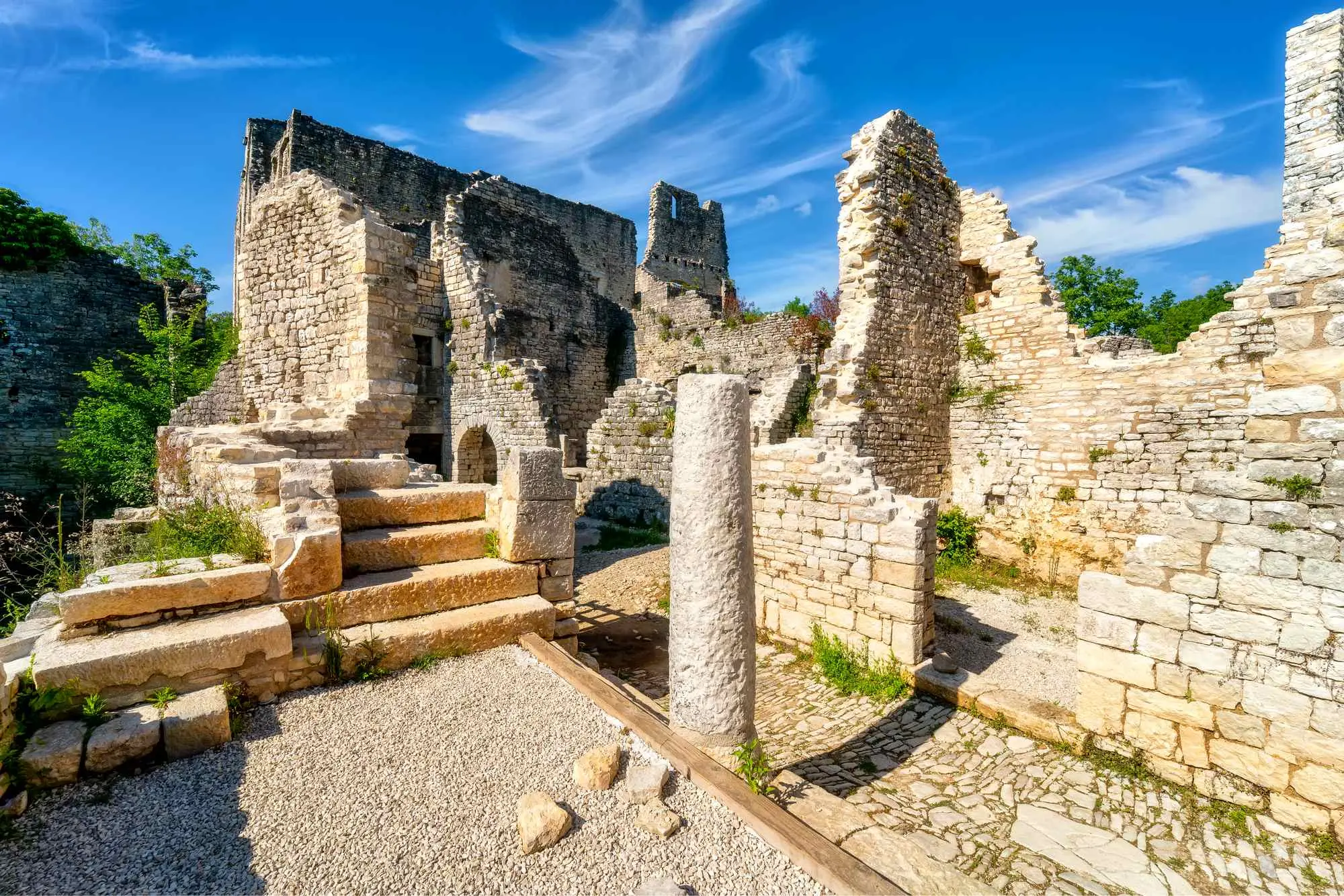
Dvigrad, Photo: DKH-Pictures Depositphotos
INHABITED SINCE PREHISTORIC TIMES
Dvigrad, known in earlier sources as Due Castelli, got its name from two neighboring settlements: Parentina and Moncastello. These two fortified villages stood side by side, partly due to natural defensive advantages and partly in response to the turbulent times. Over the centuries, only Moncastello would survive – today known as Dvigrad – while Parentina was abandoned as early as the early Middle Ages.
The area around Dvigrad has been inhabited since prehistoric times, but it gained strategic importance during the Roman Empire. The Romans built small fortifications here to monitor key trade routes between the interior and the port in Poreč and later toward Aquileia.
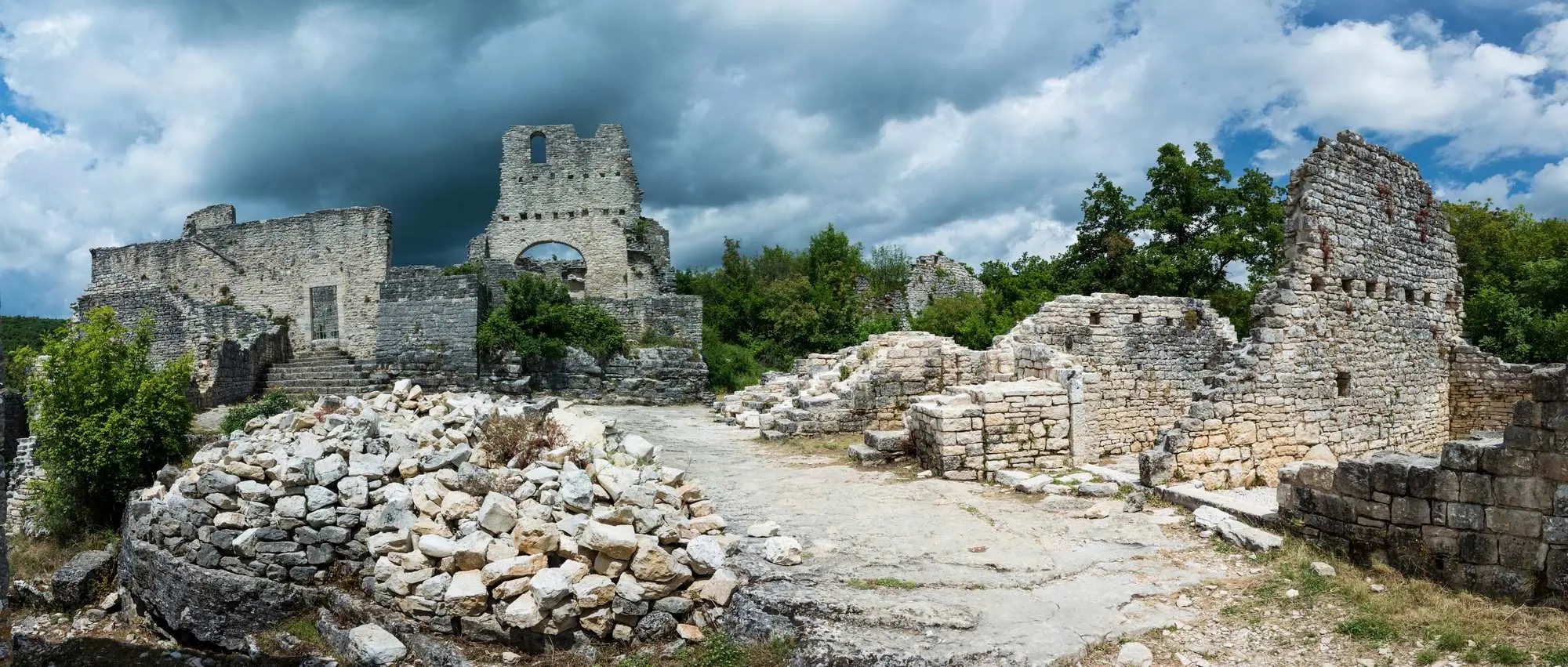
Dvigrad, Photo: uhg1234 Depositphotos
A BASTION IN THE WINDS OF POWER
The first written mention of Moncastello dates back to the year 879, when the area was under the rule of Frankish lords. It soon came under the influence of the powerful Patriarchs of Aquileia. In the 11th century, the town came under the control of the Bishopric of Poreč, and later fell under the jurisdiction of the Counts of Gorizia. By that time, Dvigrad already had fortifications, a church, and a developed defensive system.
As is often the case in Istrian history, no single crown held the town for long. From the 13th century onward, the powerful Venetian Republic became increasingly involved, gradually conquering towns along Istria’s western coast. In 1345, after several decades of conflict and political maneuvering, the Venetians finally took control of Dvigrad.
Venetian rule brought relative stability, but also a strong militarization. The town became an important defensive point against incursions from Austrian forces inland and pirates from the sea. City walls were reinforced, towers erected, and the local population engaged in agriculture, craftsmanship, and trade.
THE FALL OF THE TOWN… PLAGUE AND OBLIVION
Despite its strong walls, Dvigrad could not protect its inhabitants from an invisible enemy – the plague. The epidemic that swept through Istria in 1630 also struck Dvigrad. Survivors began abandoning the town and relocating to nearby Kanfanar. Although the town continued to function for a while, by the mid-17th century it had lost most of its population.
The last remaining inhabitants left Dvigrad in 1714, the same year the parish church of St. Sophia, located at the heart of the town, was abandoned to the mercy of time. Its outlines still dominate the center of the ruined town today.
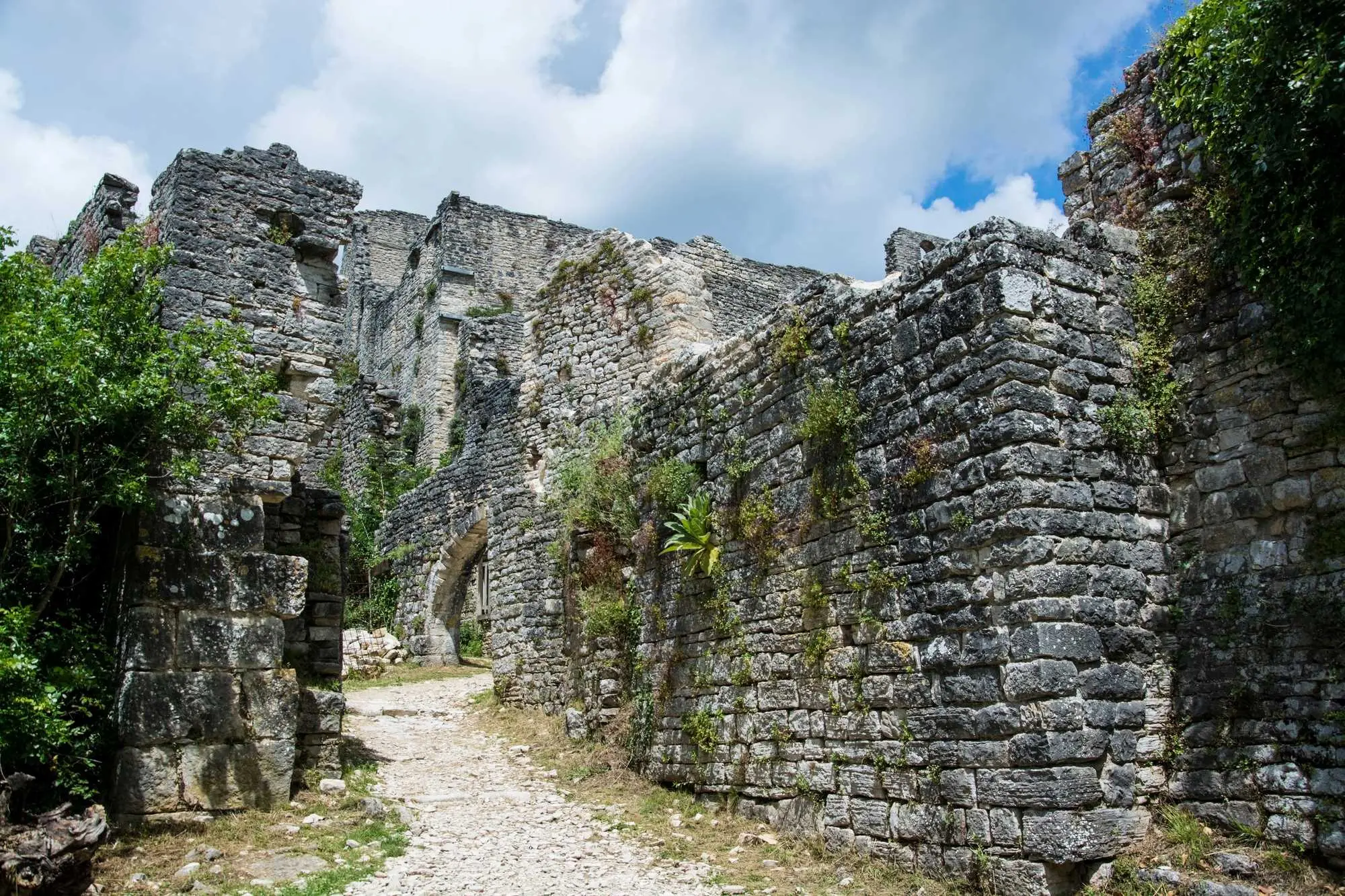
Dvigrad, Photo: uhg1234 Depositphotos
THE LEGEND OF CAPTAIN HENRY MORGAN’S TREASURE
According to legend, the famous British pirate and later governor of Jamaica, Captain Henry Morgan, who plundered the Caribbean in the 17th century, is said to have searched for a safe place to hide his vast wealth looted from colonial lands near the end of his life. It is believed that upon returning to Europe, he sought refuge in Istria and spent some time in the already partially abandoned town of Dvigrad.
The story goes that Morgan secretly buried his treasure somewhere within the town’s walls, in a hidden chamber beneath the church of St. Sophia. Supposedly, he killed all who helped him hide it, so no one would know its exact location. Since then, the treasure has remained undiscovered and still awaits the right seeker.
Although the legend lacks historical evidence, it has so deeply rooted itself in local lore that Dvigrad is often called “Istria’s pirate town.” The treasure has never been found – and who knows, perhaps the clues still lie buried among the stones.
A SILENT GUARDIAN OF TIME
Today, Dvigrad is one of the best-preserved medieval ruins in Istria. More than two hundred structures remain within the town walls – from residential houses and towers to gates and cisterns. The most impressive features are the town loggia and the main tower, lasting symbols of power and defense.
What makes Dvigrad particularly captivating is its atmosphere: untouched by modern interventions, free of plastic and cafés, it feels authentic, almost frozen in time. It has become a popular destination for archaeologists, history enthusiasts, musicians, and filmmakers who often use the evocative ruins of Dvigrad as a natural stage for concerts and film productions.
In recent decades, local communities, in cooperation with archaeologists and conservators, have been working to preserve this valuable heritage site. Dvigrad is increasingly visited by travelers seeking more than beaches and sun, by those drawn to stories carved in stone. And if you pause among its walls, you just might hear the footsteps of long-lost inhabitants echoing in the silence…

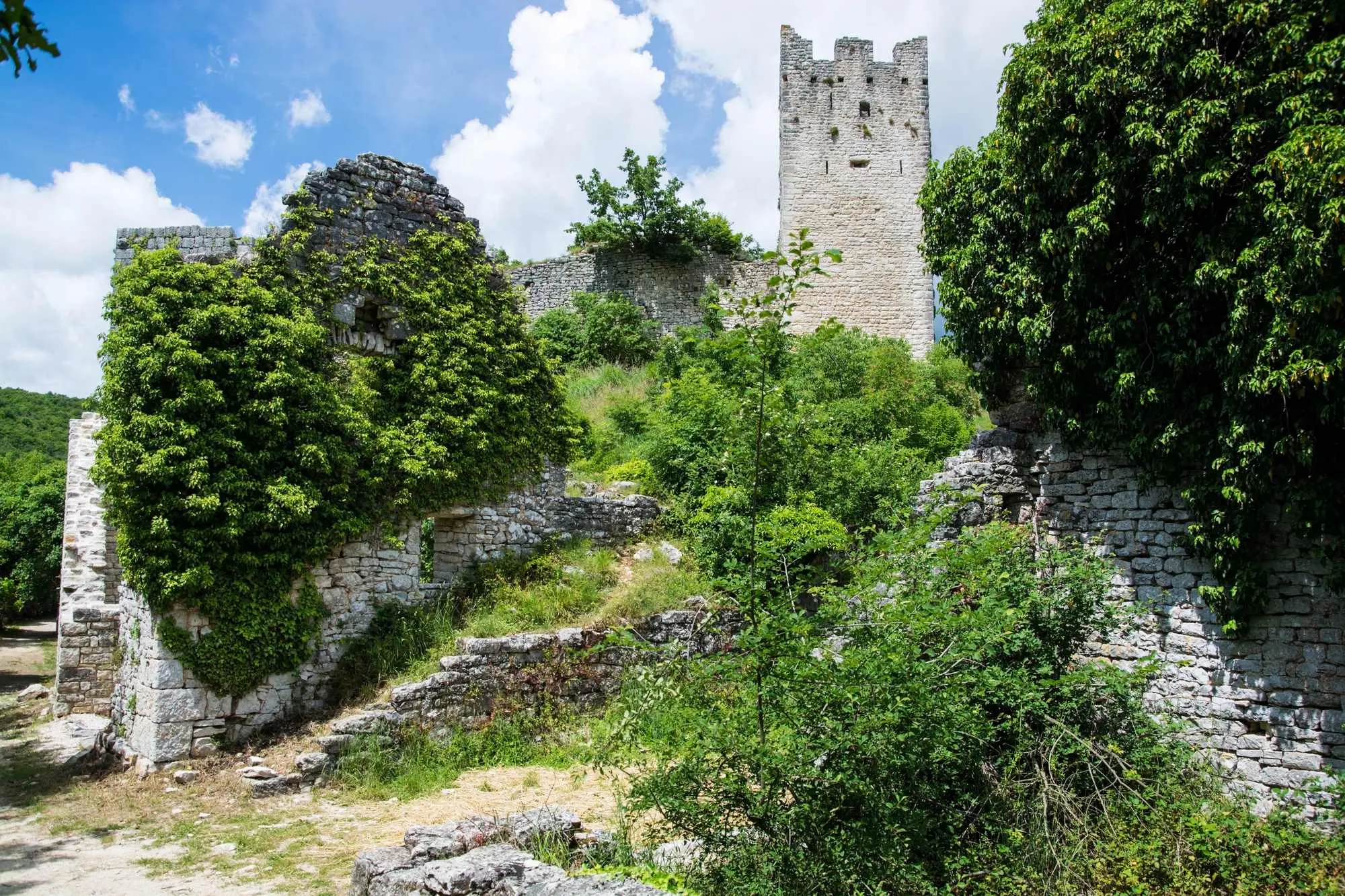
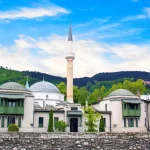
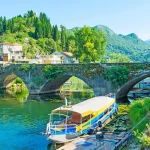
Leave a Reply